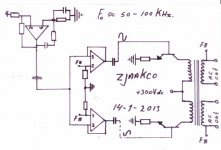Hi All
Some time life isn't easy, special if you think you can do some thing, but in real life it going completely wrong. The reason is of course no knowlegde. Second if one shoot off your idea without a reason.
Many years I walk around with a idea of a power supply. Only no idea how to get it in the real world. What's happen?
It was about 1990, a friend came with a mains filter, big, heavy, and very noisy.
So connected in the mains, and to the audio stuff. And... nothing special.
Mine friend, don't worry, a half hour. What happen, the soundstage became wider, deeper, more detail. a completely differend sound, and I love it.
On that time mine audio stuff was about $5000.
But I really dislike that big noisy filter. ( all the mains power must through that
filter). So there must be a other way.
And that is why I am here.
Some time life isn't easy, special if you think you can do some thing, but in real life it going completely wrong. The reason is of course no knowlegde. Second if one shoot off your idea without a reason.
Many years I walk around with a idea of a power supply. Only no idea how to get it in the real world. What's happen?
It was about 1990, a friend came with a mains filter, big, heavy, and very noisy.
So connected in the mains, and to the audio stuff. And... nothing special.
Mine friend, don't worry, a half hour. What happen, the soundstage became wider, deeper, more detail. a completely differend sound, and I love it.
On that time mine audio stuff was about $5000.
But I really dislike that big noisy filter. ( all the mains power must through that
filter). So there must be a other way.
And that is why I am here.

